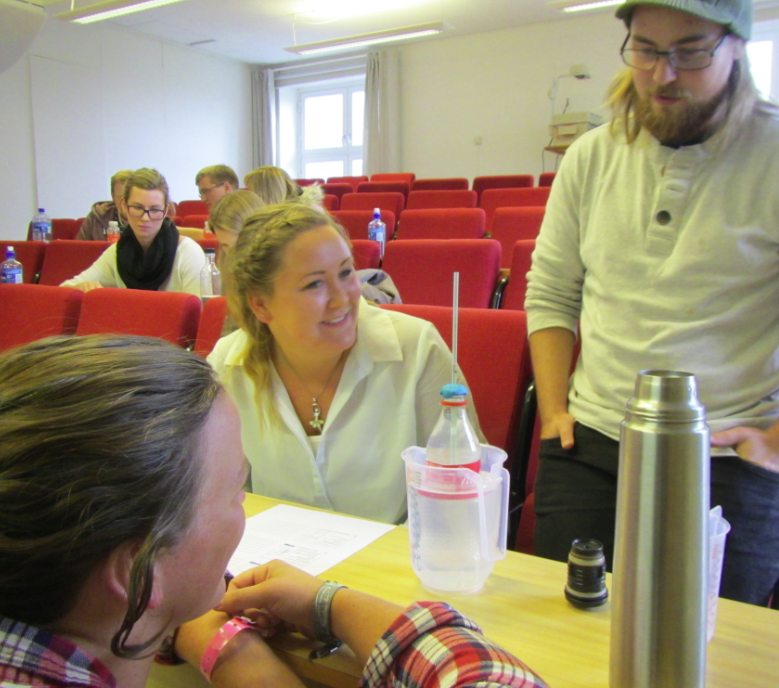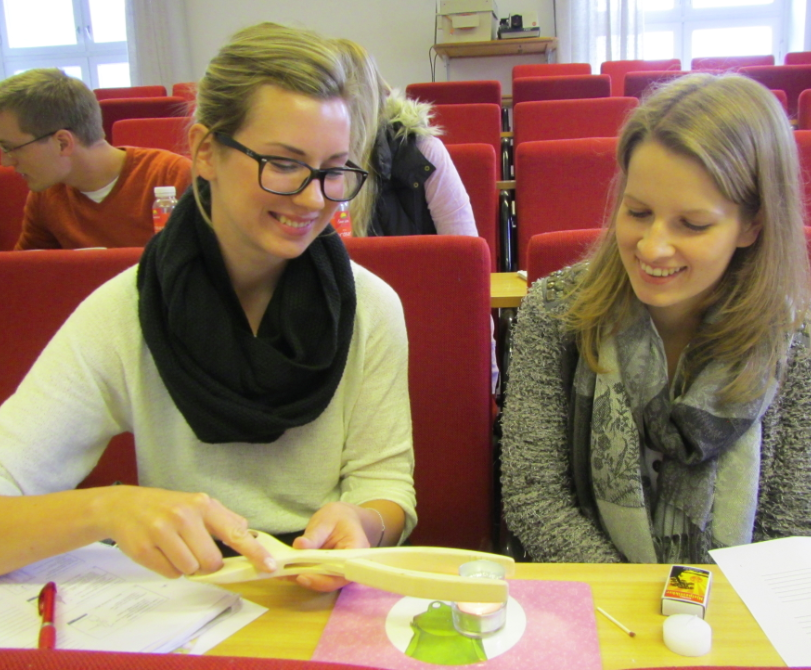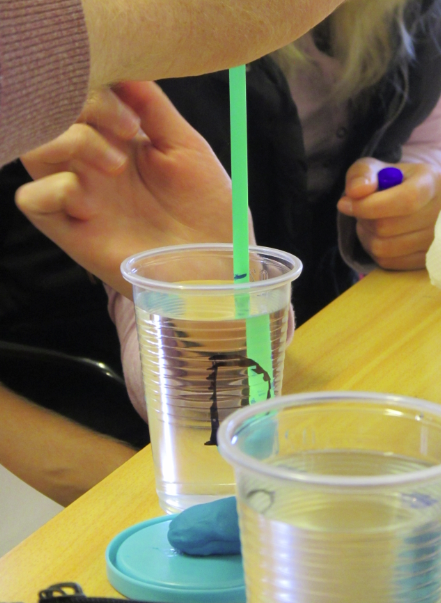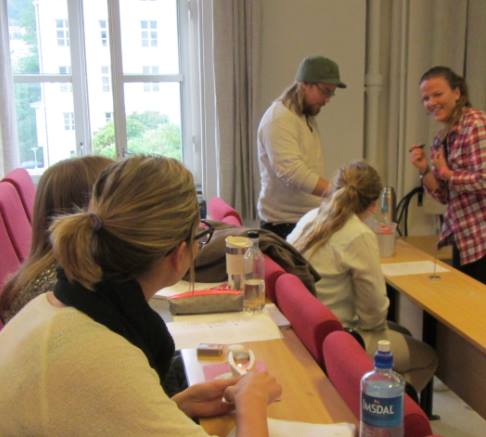
How to measure temperature, salinity and density
Three in-class experiments run in parallel. Great if you want to discuss how properties are measured and what kind of difficulties you might encounter.
Temperature, salinity and density are the most important properties in physical oceanography. Measuring them with a CTD is easy. But can you, using basic household items, build instruments to measure those properties? My students can! And it’s also a great opportunity to discuss all kinds of issues with measuring in general, and these properties in particular.
Temperature? Easy! Use the thermal expansion of water! But then wait, does our half liter of water change the temperature of the sample while “measuring” its temperature? Also, how do we know the temperature of the sample if we don’t have a thermometer to begin with?
Salinity? Really easy! Just evaporate the water and weigh the remaining salt! But what if some of the salt evaporates with the water? What kind of constituents do we have in sea water?
Density? Since we had our water samples from yesterday’s sea water tasting, all we had to do is find something that floats in sea water without submerging completely, and mark how deep it sinks in the different water samples! But then again, how do we know the density of our samples if we don’t know their temperatures and salinities because the other groups haven’t built those instruments yet? And even if they had, how would we be able to calculate density from it if we didn’t know the equation yet because it had not been established yet?
And what was the most difficult part? To stay focussed on your own experiment while there was cool stuff going on everywhere around you in the lecture theatre. As my office mate predicted: Someone will set the wooden tongs on fire!




"Excursion week" in Oceanography 101 while physically distancing - Adventures in Oceanography and Teaching says:
[…] This is a little more difficult to do if you and your students only communicate electronically and you can’t give them physical samples to investigate (but if you can place samples somewhere where students can easily and safely pick them up, you could for example give them salt water samples and ask them to figure out the sample’s salinity, or give them a fresh water and a salt water sample and ask them to figure out which one is which only using ice cubes). But there are still tons of ways problem solving can be practiced, for example by asking students to figure out ways to measure temperature, salinity and density. […]
What's #kitchenoceanography all about? - Dr. Mirjam S. Glessmer says:
[…] or replace, as well as easily transportable to use for example in (primary!) school lessons, university classes, conference presentations, workshops, or skiing […]
Measuring temperature. | says:
[…] described in this post, I like to have students build “instruments” to measure the most oceanographic […]
Measuring salinity | says:
[…] described in this post, I like to have students build “instruments” to measure the most oceanographic […]
Measuring density | says:
[…] described in this post, I like to have students build “instruments” to measure the most oceanographic […]